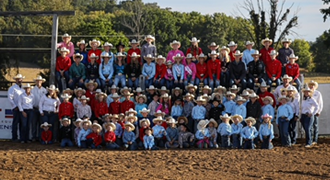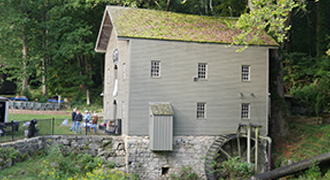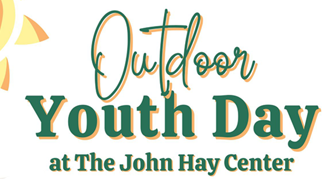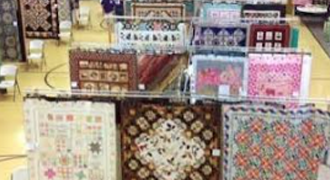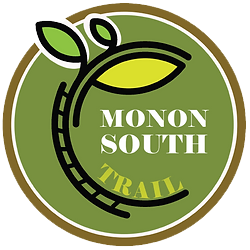WELCOME TO WASHINGTON COUNTY: YOUR GATEWAY TO ADVENTURE
Explore the Heart of Southern Indiana
Your new friends in Washington County invite you to visit our communities and explore a county rich in history, natural beauty, and vibrant culture. Whether you're a history buff, outdoor enthusiast, or a fan of charming small towns, Washington County has something for all ages. Visit us and experience the warmth, kindness and hospitality of the people of Washington County. We look forward to welcoming you to our beautiful Southern Indiana home!
![]()
Historic Adventure Awaits You
Step back in time in the Pioneer Village on the grounds of the John Hay Center or see a restored Gristmill churning out cornmeal and explore the region's rich history through exhibits, archives, and artifacts that tell the story of our vibrant past. Visit the birthplace of John Milton Hay and learn about his significance in the Lincoln administration and his guidance for five presidential administrations. Washington County has such a long history and there is so much to see it may be hard to know where to begin. Here are some sites you will want to be sure and make plans to visit.
Beck's Mill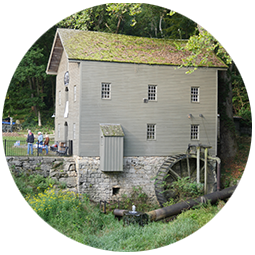
(One of only a handful of operational Gristmills remaining in the United States)
Beck's Mill is one of the most famous and historic landmarks in Indiana. Beck's Mill was added to the National Register of Historic Places in 2007. Beck's Mill is the only extant mill in Indiana that used only grindstone milling in the entire milling process.
While the determination of the volunteers of the newly formed Friends of Beck's Mill Inc. was evident, their ability to locate funding to complete such a large restoration project was uncertain. Bill and Gayle Cook, along with son Carl realized the historic significance of Beck’s Mill to Washington County after learning about the efforts to save Beck's Mill. Bill and Gayle Cook founded Cook Group in 1963 in Bloomington, Indiana and their philanthropic efforts have touched the lives of Hoosier's all across Indiana. In 2006, the Cook family graciously offered to assist the group in their effort to reclaim the Mill. With the efforts of Pritchett Brothers performing the restoration services in partnership with Ridgway Architecture the future of Beck's Mill had finally changed for the better.
In 2008 Beck's Mill was returned in restored and operational condition to the directors of the Friends of Beck’s Mill, Inc. Beck’s Mill is operated solely by the efforts of an all volunteer staff and the leadership of Friends of Beck’s Mill, Inc. continues to enhance the visitor experience to Beck's Mill every year as numerous new events are planned every season.
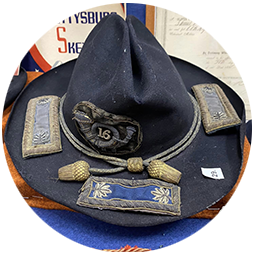 John Hay Center - Stevens Memorial Museum
John Hay Center - Stevens Memorial Museum
(A museum dedicated to the history of Washington County and the State of Indiana)
The museum was designed to preserve the heritage of Washington County, Indiana and contains dozens of exhibits representing thousands of artifacts from generous donors. The Stevens Museum includes hundreds of native historic relics. Many Civil War mementos are included along with tools, agriculture tools and items, beautiful furniture, clothing and other displays. Visitors will find it historically educational and fulfilling in developing an association with the lifes of our ancestors. The Stevens Memorial Museum also houses the Washington County Historical Society Genealogy and Historical Library. Many researchers from all over the United States come here to work on special projects. A small library staff is available to work with researchers.
Permanent exhibits include John Hay Display, Stevens Family Display, Native Americans Display, Pioneer Artifacts Display, Indiana’s founding and bicentennial Display, Early Lighting Display, Dairy History Display, Underground Railroad Display, Bradie Shrum Display, Local Advertising Display, Antique Jewelry Display, Music Parlor, Local Clubs and Organizations Display, Early Wedding Gowns Display, Early Quilts Display, Military Room: From the Revolutionary War to the War in Afghanistan, Early Lawyer’s Office, Early Doctor’s Office, Early Dentist’s Office, Neal’s Confectionery, Early Glassware, Dishes and China Display, County Courthouses Display, County Churches Display, County Educators Display, Local Sports Display Rooms; including County Racing History, Early Home Interior Display, with Sitting Parlor, Bedroom, Kitchen and Dining Room, Miscellaneous Room with Early Radios, Baby Cradles, Musical Instruments, Spirit of 76 Display, Sewing Machines, additional Quilts and Coverlets, and other items, Antique Toy Room, 1910 Model T
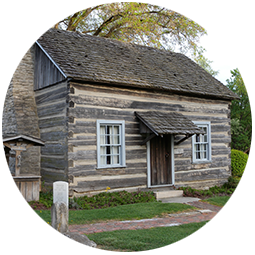 John Hay Center - Pioneer Village
John Hay Center - Pioneer Village
(Experience history with a stroll through our living village from the 1830's)
The Pioneer Village is an extension of the Stevens Memorial Museum and has been reconstructed as a "living village" during the 1830's era. Visitors find a visit to the village a challenge to their imagination of the way of life for early settlers. The 1830's village features a jail, blacksmith, school, church, Haganman house, smoke house, barn, bell tower, loom house, and a Post Office and General Store. At various times during the year, volunteers portray excellent renditions of various community figures such as the blacksmith or loom worker.
The Pioneer Village was the culmination of a dream of famed coach Everett Dean, who was born in Livonia, Indiana in 1898. Dean became the head baseball and basketball coach at his alma mater, Indiana University, from 1924 to 1938. In 1938, Dean was named head basketball coach at Stanford University, where he coached the team to the 1942 NCAA championship. Dean was named baseball coach at Stanford in 1950, and led Stanford's baseball team to the 1953 College World Series. Dean is the only coach named to both the Naismith Basketball Hall of Fame and the College Baseball Hall of Fame. He was inducted into the Indiana Basketball Hall of Fame in 1965. He also has the distinction of being the first basketball All-American from Indiana University.
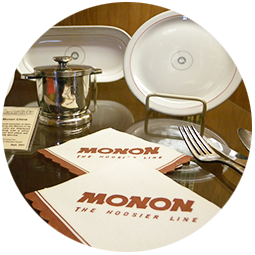 John Hay Center - The Depot Railroad Museum
John Hay Center - The Depot Railroad Museum
(Learn about the founding of the Monon Railroad and The Hoosier Line)
The Depot Railroad Museum stands as a tribute to and reminder of Salem’s role in organizing the railroad that served much of Indiana for 125 years. Known as “The Hoosier Line” because its tracks were located in the state of Indiana, the "Monon Railroad" was founded because of the efforts of Salem businessmen.
The Depot Museum contains antique furniture from railroad stations, including the original waiting room benches from the Salem station that was torn down in 1982. Also, there are displays of railroad equipment and tools, signs, advertisements, signals and lanterns. A worker’s motor car and a station’s baggage wagon are on display. The Depot’s basement contains an HO scale model railroad that depicts Washington County as it was in the 1950s and 1860s. A team of volunteers is rebuilding Salem, Pekin and Campbellburg as they were a half century ago.
The Depot Railroad Museum is also home to The Monon Railroad Historical-Technical Society
The Monon Railroad Historical-Technical Society, Inc. was formed in the mid-1970s as a not-for-profit organization exclusively for educational purposes by a group of individuals interested in preserving the memory of the Monon Railroad. A portion of The Depot Museum is exclusively for the Monon Railroad Historical-Technical Society, Inc. for Board Of Directors meetings, storage and display of its archives.
John Hay Center - Birthplace of John Hay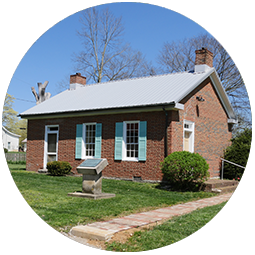
(Tour the birthplace of one of American's most respected statesmen & diplomats)
John Hay was a great American statesman, diplomat, author and poet, whose political career spanned over 50 years. He was born in this small brick home, on College Avenue, in Salem on October 8, 1838. John was the fourth of five children, born in the house, to Dr. Charles Hay and the former Helen Leonard.
John Hay was the private secretary to President Abraham Lincoln ,1861-1865, Writer/Author, 1870-1890, Life of Lincoln and many poems. Hay grew to adore President Lincoln for his goodness, patience, understanding, sense of humor, humility, magnanimity, healthy skepticism, sense of justice, resilience and power, love of the common man and mystical patriotism. Many later noted that Lincoln too, loved Hay as a son and was very attached to him.
Mr. Hay was also Ambassador to England; and Secretary of State under President McKinley, 1898, and President Roosevelt, 1902. In 1903, after years of negotiating treaties, Hay successfully passed legislation that afforded the United States the opportunity to start construction on the Panama Canal.
The John Hay Center is committed to the preservation and remembrance of the heritage of Washington County, Indiana.
Nature Escapes... Not all of Indiana is Flat
 Leave the parking lots and traffic jams of city life behind you and leave the cellphone on mute while you embrace the sounds of nature, breathe the fresh, crisp air the circulates through the old growth forests and listen to the songs of the native birds and the burbles of the Blue River as it travels along its bed, bubbling over rocks and branches.
Leave the parking lots and traffic jams of city life behind you and leave the cellphone on mute while you embrace the sounds of nature, breathe the fresh, crisp air the circulates through the old growth forests and listen to the songs of the native birds and the burbles of the Blue River as it travels along its bed, bubbling over rocks and branches.
Washington County is the ideal place to experience the Knobstone Escarpment, which is a rugged geologic region, that created the most rugged and interesting terrain in Indiana. The escarpment's most prominent features are the steep hills, often referred to as "knobs", and deep ravines. Washington County covers a large geographic territory (7th Largest in Indiana) and a relatively small population of just over 28,000 residents, so hiking and enjoying nature can be a perfect break from the hustle and bustle of larger population centers.
Monon South Trail - Coming Soon
(Coming Soon to Washington County - The Longest Continuous Trail in Indiana)
The Monon South Freedom Trail is a 62 mile trail between Mitchell and New Albany that connects eight local communities in the Lawrence, Orange, Washington and Clark Counties uplands region of southern Indiana. Washington County will be located near the middle section of the new greenway trail.
The new greenway trail will offer dramatic vistas of rolling Indiana farmland, forests and valleys and linkages to several regional destinations, including nearby state parks and recreation facilities. The trail is expected to highlight local community destinations and connections to other regional attractions as it transverses communities in Washington County and Southern Indiana.
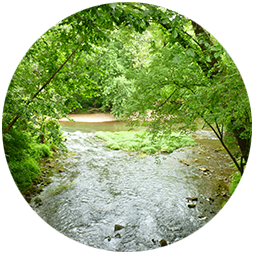 Blue River Natural and Scenic River System
Blue River Natural and Scenic River System
(Indiana's First State Designated Natural and Scenic River System)
The Blue River originates in Washington County northeast of Salem Indiana and flows south to form the natural boundary between Crawford County and Harrison County, Indiana. The Blue River continues south to the Ohio River. The Blue River was designated as Indiana's First State Natural and Scenic River System and is a favorite outdoor recreation destination.
The Blue River is home to a significant population of hellbender salamanders. The hellbender is the largest salamander in the Western Hemisphere. The Blue River is one of only a few places in the country that support a population of these wonderful creatures. The cold and heavily oxygenated water flows up from underground caves to form the Blue River and provides a healthy environment for the salamanders. The Blue River Corridor also provides a home to the endangered Allegheny Woodrat and the Indiana Brown Bat.
Knobstone Trail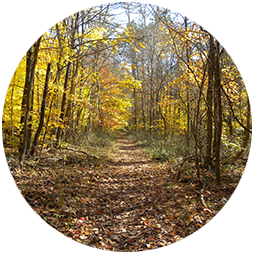
(For the outdoor enthusiast...Experience the Longest Hiking Trail in Indiana)
The Knobstone Trail is the longest hiking trail in Indiana. Its southern terminus is located in the Deam Lake State Recreation Area. The northern terminus ends at Delaney Creek Park near Salem, however there are plans to eventually extend the trail another 80 miles north to Martinsville, Indiana. As it lies along the Knobstone Escarpment, it is a difficult hike, which is why many use the Knobstone Trail to prepare for hiking the Appalachian Trail. Physically, the Knobstone Escarpment is the most rugged terrain in Indiana. The escarpment's most prominent feature is its steep hills, often referred to as "knobs", and ravines.
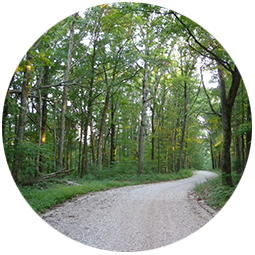 Jackson - Washington County State Forest
Jackson - Washington County State Forest
(Take a Beautiful Scenic Drive Off the Beaten Path)
The Jackson - Washington County State Forest encompasses 18,000 acres in Jackson and Washington counties. The State Forest provides scenic views, old growth forest and breathtaking hiking opportunities. Within Washington County the following lakes are located in the state forest. A valid Indiana Fishing License is required to fish at these lakes: Spurgeon Hollow Lake (12 acres), Potter Lake (10 acres) and Plattsburg Pond (8 acres).
If you're looking for a new route to enjoy beautiful fall foliage then a drive through the Jackson - Washington County State Forest should be your next seasonal destination. Please Note: Some of the roads through the park aren't paved, so go slow and enjoy the sights and sounds of nature.
![]()
Family Friendly Fun
 Washington County is where family memories are made, laughter is abundant, and adventure is just around the corner. Our diverse range of family-friendly attractions and activities ensures that every member of your family, from the youngest to the oldest, will have a blast. Join us for a memorable family getaway and discover why Washington County is the perfect place for family fun!
Washington County is where family memories are made, laughter is abundant, and adventure is just around the corner. Our diverse range of family-friendly attractions and activities ensures that every member of your family, from the youngest to the oldest, will have a blast. Join us for a memorable family getaway and discover why Washington County is the perfect place for family fun!
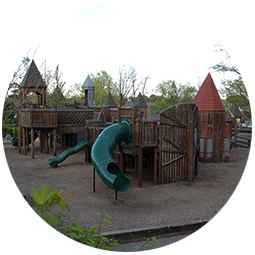 Riley's Place / DePauw Park
Riley's Place / DePauw Park
(When the little ones just need some time to run, jump, play and just be a kid)
"Riley's Place" is located inside DePauw Park. DePauw Park is just a few blocks west of the Salem Square. Riley's Place was named after Riley Jean Tomlinson, a local toddler who accidentally drowned in a swimming pool, the park was built in 2001 and contains two and three story wooden castles and other structures for children's play along with swings, slides, and similar playground equipment.
DePauw Park is named after Washington C. DePauw who was born in Salem in 1822. He was the son of a pioneer lawyer, surveyor, and judge. His father's early death left him on his own resources at the age of 16, but the young Washington C. DePauw soon became a successful merchant, dealing in farms, flour mills, wholesale grain, and, during the Civil War, government supplies. His investments in banks, railroads, iron factories, a woolen mill, and a chemical plant helped to make him one of the wealthiest men in the state.
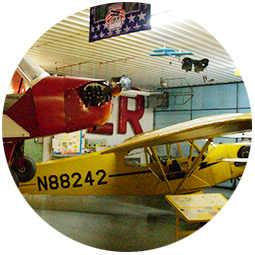 Piper Flight Museum
Piper Flight Museum
(Experience Early American Aviation History and the contributions of the Piper Aircraft Company)
The Piper Flight Center Museum is located at the Salem Municipal Airport in Salem, Indiana. The Piper Flight Museum contains three vintage Piper aircraft, a flight simulator, and a display room with several display cases containing numerous Piper artifacts dating back to the early beginning of Piper Aircraft Corporation.
If you would like to visit the Piper Flight Museum or to schedule a party, meeting or special event please visit their website for addtional information.
Cornucopia Farm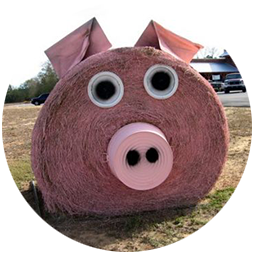
(Southern Indiana's Premier Family Fun Farm)
A visit to the Cornucopia is a great opportunity for the whole family to learn about farm life, farm animals and nature. Parents and families will have a great time making memories and enjoying some quality time outdoors on a working farm.
From their corn and soybean mazes to the petting farm and pumpkin patches, Cornucopia Farm offers something for everyone. With sweet treats, delicious burgers and more available at the Café no one in the family goes hungry! Cornucopia is located 10 miles east of Salem and is open to the public during September and October.
Discover our Historic Architecture
Step into a world where history and architecture intertwine to share stories of our glorious past. Wealthy industrialists, military leaders and entreprenures like Washington C. Depauw, who was one of the wealthiest men in Indiana at one time, built glorious homes and buildings that reflected their wealth, success and the styles of the day.
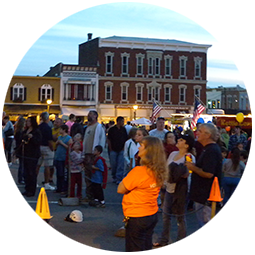 Salem Downtown Historic District
Salem Downtown Historic District
(Designated as a National Historic District in 1997)
The Salem Square is the heart of Washington County. The Salem Square is the home to restaurants, clothing boutiques, pharmacy, bank, businesses and a coffee shop. The original plat of the city of Salem was completed in 1814 and is within the boundries of the national historic district. It is bounded by Mulberry and Hackberry Street in the north, Hayes Street in the east, the CSX railroad tracks (future Monon South Trail) in the south, and Brock Creek to the west.
The historic district contains 253 contributing buildings, 3 contributing structures, and 5 contributing objects in the central business district. The district was placed on the National Register of Historic Places in 1997. Its architectural styles are Italianate, Gothic Revival, Classical Revival, Late Victorian, Early Republic, and Late 19th/20th Century Revivals.
Washington County Courthouse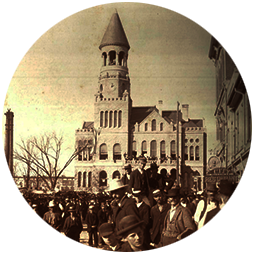
(The Courthouse is the heart of historic downtown Salem and is still in use today)
The Washington County Courthouse in Salem, Indiana is a Richardsonian Romanesque building that was completed in 1886. It was designed by Harry P. McDonald of Louisville and his brother. Local limestone from the area was mined and used in the construction of the structure. This is the third courthouse at this location. The tower of this structure was struck by lighting in 1934 that started a fire and caused some damage to the tower. It is located at the center of the Salem Downtown Historic District. The photo shows residents celebrating the opening of the courthouse in 1886.
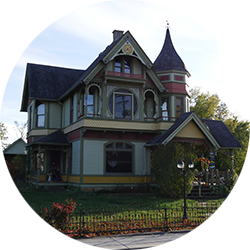 George Franklin Barber Homes
George Franklin Barber Homes
(Washington County is home to a significant number of George F. Barber designed homes.)
George Franklin Barber (July 31, 1854 – February 17, 1915) was a famed American architect known for the house designs he marketed worldwide through mail-order catalogs. Barber was one of the most successful residential architects of the late Victorian period in the United States.
Many extant Barber houses are still used as residences, while others house museums, bed and breakfasts, and office space. Barber houses have provided inspiration for Christmas cards, wall hangings, and even dollhouses. Barber houses are located in Campbellsburg, Salem and Harristown in Washington County.
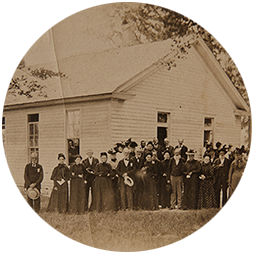 Blue River Friends Hicksite Meeting House
Blue River Friends Hicksite Meeting House
(Blue River Friends Hicksite Meeting House is the oldest extant Quaker Meeting House in the State of Indiana.)
Early in the 1800’s many families of Friends (Quakers) came to southern Indiana in opposition to slavery and established homes and places of worship in Washington County. Leaving comfortable homes in North Carolina, they traveled together in covered wagons to the lands that would soon become the states of Indiana and Ohio. The desire to live in a place where every man, woman, and child was a free person and to enjoy the liberties granted to them in the newly formed Northwest Territory was the impetus they needed to leave friends and neighbors behind and start a new life in Washington County.
Culinary Delights
Washington County boasts a vibrant and diverse culinary scene that will tantalize your taste buds and leave you craving for more. Whether you're a food enthusiast, a family looking for a delicious night out, or a couple seeking a romantic dinner, we have something special for everyone.

Your Home Away from Home
Discover the perfect place to rest your head and make your stay in Washington County a great one. Our family-friendly hotels offer spacious rooms, children's activities, and convenient amenities to make your stay comfortable and enjoyable for all ages.



